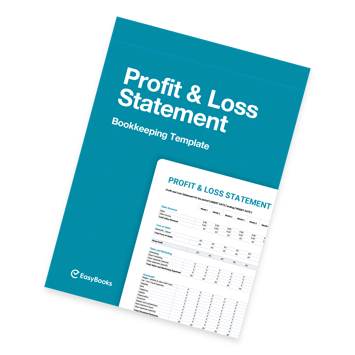There's an old motto about a business that "cash is king" and so, cash flow is the blood that keeps the heart of the kingdom pumping.
Cash flow management is vital for a growing business and studies over the years have found that cash flow problems can be one of the leading causes of failure for businesses. So we’re here to answer all your questions about the elusive cash flow.
What is Cash Flow?
Cash flow is the money that’s moving (flowing) in and out of your business in a month. Although it does sometimes seem that cash flow only goes one way - out of the business - it does flow both ways.
Positive cash flow: This occurs when the cash pouring into your business from sales, services and accounts receivable is more than the amount of the money leaving your activities through accounts payable, monthly expenses, salaries and everything else.
Negative cash flow: This happens when your outflow of cash is higher than the money coming in. This isn’t good news for your business, but there are steps you can take to solve the situation and generate the funds you need while maintaining expenses.
Why is Cash Flow Important?
Cash inflow is the lifeblood of your business and comes from sources like payments from customers, receipt of a loan, monetary infusion from an investor or interest on savings.
Poor cash flow management is one of the main reasons that 50% of small businesses fail during their first five years.
No matter what your turnover is, if your cash flow is negative, your business won’t survive. Positive cash flow means your business is running smoothly and businesses that don't exercise proper cash management won’t be able to make the investments needed to compete.
How Do I Make Sure I Don’t Have Cash Flow Problems?
Be selective about who you work for and credit-check new prospects before starting to do business with them. Turning down potential new contracts is not easy and needs a steely resolve. Still, if a company’s credit history looks less than impressive, you could be saving yourself future heartache and cash flow problems.
It could also serve you well to explore the credit history of key individuals within the company. Have they ever been associated with other organisations that have gone bankrupt? Monitor the credit worthiness throughout your relationships with customers and suppliers. Your bank can help with this task.
How Do I Fix My Cash Flow Problems?
If you have an immediate cash flow problem, then the quickest fix might be a short-term financing solution like a loan.
Short-term loans are relatively easy to get approved and can be funded in as little as one business day. These loans traditionally have a higher interest rate (APR) and the cost of capital can be less expensive than longer-term options with a lower APR.
A small business line of credit works similarly to a credit card. You only pay interest on your current outstanding balance, not on the total credit line extended to you. When you pay down your balance, the amount of available credit increases and becomes available to borrow again in the future.
It’s best to apply for a line of credit well before you need it. Get it done when times are good, don’t wait until there’s a crisis.
How Do I Track Cash Flow?
- Set up a calendar for accounts receivable: If you give customers a set number of days to pay, you have definite dates when their payments are due. Make sure you know precisely when those dates come around as accounts receivable make up a significant portion of the money coming into your business.
- Use cash flow projections: Start with cash on hand. Add in the amounts due from customers and subtract planned expenditures. Once you have a projection, measure your actual cash flow against it. At the end of the month, if you don’t have the cash you predicted, you need to find out why. Identifying expenses you may not currently be counting helps you track better.
- Match inventory to sales: Analyse your sales to see which inventory items sell the most. This lets you track high-selling items so you know when to purchase them and it lets you track low-selling items so you can avoid ordering more.
- Schedule expenses before you need them: Instead of buying equipment and supplies when you identify a need, time your purchases and spread them out. Also schedule your regular payments such as utilities, rent and insurance. Even a simple spreadsheet will help you, because you can see when you have scheduled expenditures.
You’ll waste a lot of time if you’re managing your cash flow. Look for useful apps, software and templates to speed everything up and make life easier. We’ve created these templates to help you keep track and ensure you’re in the green.
Download Bookkeeping Templates Now To Keep Track of Finances
To manage your cash flow, make sure to download our free Profit and Loss template today. It's just one of the templates featured in our pack that will help you manage your business expenses efficiently. Whether you need a template for invoices, petty cash and more - we’ve got you covered.
Get your free template now using the link below.








